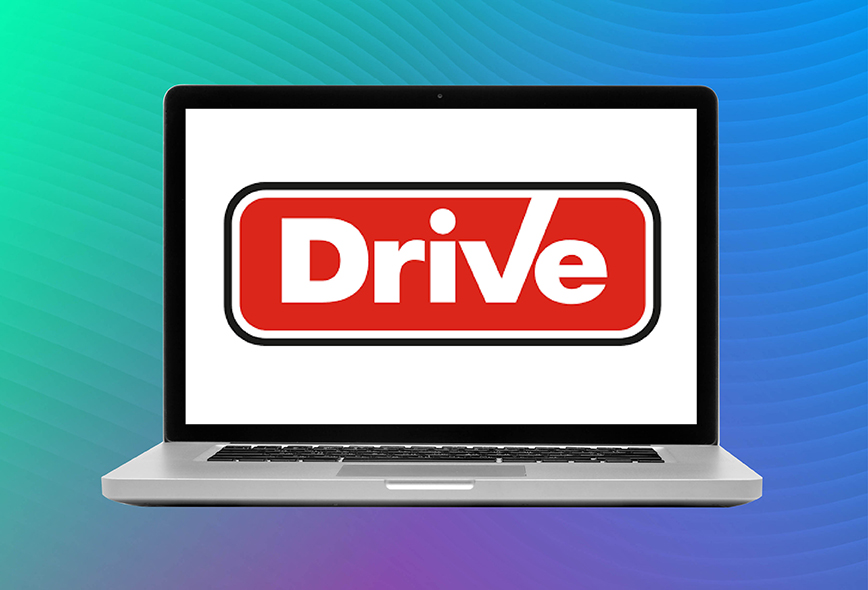Automotive Outlook: Reflecting On 2024, Gearing Up For 2025
The automotive industry is rapidly evolving, driven by innovation, regulation, and changing consumer needs. Cooper Parry’s industry leads will reflect on 2024’s key moments and explore what lies ahead in 2025.










EXCITING CHANGES ON THE ROAD IN 2025
The automotive industry faced a year of transformation in 2024, but confidence wavered as uncertainty took hold. As we look back on the year and ahead to 2025, we’ll explore the key trends, market transactions, and industry shifts shaping the road ahead.
2024 saw a push-and-pull dynamic across the sector. The agency model remained a sticking point, with many franchises delaying or rethinking adoption. Hybrid approaches, where control is split between dealers and manufacturers, have proven ineffective for both sides.
Meanwhile, government and policy changes left the industry seeking clarity. Hopes for reinforced support of the ZEV mandate and UK automotive investment weren’t realised. And with NIC increases introduced the long-term impact remains uncertain.
Watch or read as our Automotive team break down these shifts and explore what they mean – helping businesses prepare for what’s next.
2024 IN THE REARVIEW
2024 was a year of transformation, but confidence across the automotive sector took a hit.
From policy uncertainty to shifting market dynamics, watch as Head of Automotive Ian McMahon and David Kendrick, Corporate Finance Partner and Head of the North, discuss the key industry highlights.
BUCKLE UP: WHAT’S COMING IN 2025?
After a year of consolidation, shifting market dynamics, and economic uncertainty, 2025 is set to bring new challenges and opportunities for the automotive sector.
From evolving M&A activity to the continued rise of electrification and policy shifts, businesses will need to stay agile to navigate the road ahead.
In this video, Ian and David break down the key themes set to define the automotive landscape in 2025, helping you stay ahead in an industry that never stands still.
MORE INSIGHTS AHEAD : SIT BACK & HIT PLAY
2024 REAR VIEW & WHAT’S UP AHEAD
Not watched the team’s take on the road so far, and what’s coming round the bend? No worries. We’ve recapped the key talking points from 2024 and the hot topics steering the conversation for 2025. Jump below and get stuck into the detail.
THE KEY DETAILS – UNPACKED AND READY TO ROLL
-
- Agency Model: Stuck in Limbo – Many franchises delayed or rethought agency adoption, with hybrid models proving ineffective for both dealers and manufacturers.
- Government & Policy Uncertainty – Hopes for reinforced support of the ZEV mandate and UK automotive investment faded. The National Insurance Contribution cost changes and rising minimum wage added pressure following the Autumn Budget with long-term impacts still unclear.
- Market Trends – New car registrations rose 2.6% YOY, petrol remained strong, and hybrid sales surged, potentially driven by concerns over EV residual values. Meanwhile, oversupply returned, pushing down EV prices further. (*figures provided by the SMMT)
- Financial Pressures – Salary sacrifice schemes propped up the market, but a gap is forming between tax-efficient lease buyers and retail consumers.
- M&A Activity: The Big Keep Getting Bigger – Large dealer groups continued to acquire owner-managed businesses, with some brand fallout along the way. But not all big deals stuck, some acquisitions triggered a cascade effect, with larger players offloading sites to smaller local dealers.
-
When it comes to automotive M&A, few know the market better than David Kendrick, Corporate Finance Partner at Cooper Parry. With over 250 automotive deals under his belt, he’s seen the industry evolve, and 2024 was no exception.
It was a year of major consolidation, with big-ticket acquisitions reshaping the sector and paving the way for further shifts in 2025. Here are David’s top market insights and what we can expect next.
2024 saw some major moves in the automotive sector, with two high-profile acquisitions leading the charge. Inchcape was acquired by Group 1 a deal that highlights the growing trend of large players consolidating their positions in key markets. This move is just one example of how global retailers are tightening their grip on the industry.
Similarly, Pendragon was acquired by Lithia another significant transaction that underscores the fierce competition between international dealer groups. These acquisitions are reshaping the competitive landscape, and they’re setting the stage for even more consolidation as we move into 2025.
One of the biggest shifts in the market is the rise of “Super Groups”. Large, powerful dealer groups that are not only expanding their reach but also transforming how the industry operates. They’re setting new standards for scale, efficiency, and competitiveness, changing the game for everyone.
At the same time, local market consolidation is picking up steam. Family-owned businesses continue to be acquired by regional operators, which is tightening control over local markets. As this trend grows, smaller, independent dealerships may find themselves increasingly up against these larger, more established players. It’s clear that the competitive environment will only get tougher as we head into 2025.
-
As we head into 2025, smaller independent dealerships will remain attractive targets for regional operators looking to expand.
At the same time, distressed sales are expected to rise as struggling businesses seek buyers. Strong, well-performing dealerships will continue to command premium valuations, while opportunities for turnaround acquisitions at lower valuations will also increase.
With major consolidation already shaping the market, 2025 is set to be another dynamic year for automotive transactions.
-
2025 is shaping up to be a year of significant change in the automotive world. Here’s what to keep an eye on:
- Agency Model Evolution – Manufacturers and dealers will continue to figure out how to best adapt to this new sales model.
- EV Advancements – Expect improvements in range, infrastructure, and affordability, making electric vehicles even more accessible.
- Chinese Brands – With their growing market share, Chinese brands are starting to shake up the traditional OEMs, adding more competition to the mix.
- Tariffs & UK Production – How will evolving trade policies impact local manufacturing? The question remains as we look at post-Brexit dynamics.
- EV Incentives – Will the government step up its efforts to encourage EV adoption? Look for potential incentives or policies to drive the shift to electric.
- Purchasing Power – With interest rates dropping but car prices on the rise, what does this mean for buyers looking to make a purchase in 2025?
These trends will likely redefine the landscape as we move forward.
-
As competition intensifies in the automotive market, price discounting is making a strong comeback. With more players vying for market share, dealerships are expected to offer bigger discounts to attract buyers, setting the stage for a highly competitive year ahead. This shift could shake up pricing strategies and impact margins across the sector.
-
Retail registrations are expected to flatline in 2025. That’s partly because the 2024 figures were boosted by a high volume of Motability sales, something many dealer composites have highlighted. But that level of activity just isn’t likely to continue into this year. The SMMT is predicting a modest increase in registrations for 2025, less than 1% – which tells you all you need to know about how cautious the outlook is.
At the same time, falling residual values for EVs and PHEVs are putting pressure on the market. That’s making it tougher for retailers to keep registration figures strong, and it means dealerships will need to rethink their strategies to navigate what’s shaping up to be a more challenging landscape.
We’ve also seen, as expected, a skewed start to Q1 2025. Some registrations that were originally planned for April were pulled forward to avoid the impact of the VED increase, which hit most fuel types. That early shift has had a knock-on effect on the quarterly performance.
-
Fleet and broker channels are set to play a more prominent role in getting new vehicles to market. As consumer demand shifts and dealers adapt to new sales models, these channels will become essential in reaching a wider audience, driving volume, and enhancing distribution strategies. Expect them to reshape how vehicles are sold in the coming year.
-
Agency adoption is set to slow for some brands in 2025, as uncertainty continues to hold back investment from strong operators. Brands that stick to traditional models and offer clear dealer margin guidance will provide dealers with the confidence to focus on running their businesses, rather than navigating shifting sales structures. For many, sticking to what works seems to be the best path forward.
-
It looks like the noise around Discretionary Commission Arrangement (DCA)is finally starting to fade, bringing some much-needed clarity for lenders. As we move into 2025, there’s also a broader shift happening in how cars are both sold and financed, opening new opportunities for finance providers to adapt and thrive in an evolving market. It could be the start of a more streamlined and predictable road ahead for the industry.
HOT OFF THE PRESS
UPCOMING EVENTS
Reviews
BSAP, JUNE 25
“Great communication.”
LAURA, JUNE 25
“Although the service we have received has been extremely good, there has been long delays in partner reviews.”
GARETH, JUNE 25
“Great relationship with Audit Partner and Audit Manager which means resolutions are reached quickly on difficult and complex issues. The accounts are put together in an efficient and well presented manner. The audit team generally adopt a logical and pragmatic approach. Only real negatives were that Kennedy audit was a more a drawn out process than perhaps it needed to be. Reconciling the consolidated accounts back to the Cooper Parry calcs was complex and there were some small discrepancies. As discussed with the Audit Partner I do have some concerns on the level of fees.”
AATAP, JUNE 25
“Great conference, helpful team and super service. Thank you.”
CHERILYN, JUNE 25
“The account were turned around quickly, and we were kept up to date with the progress of the audit”
LUCIE, MAY 25
“Easy communication, always get back to me promptly, provide advice when needed, like the Inflo system very user friendly.”
HAYLEY, MAY 25
“The recent external audit and financial statement preparation were executed with professionalism and thoroughness. The auditor team demonstrated strong technical expertise and diligence, ensuring the process was both comprehensive and transparent. Their approach to testing, particularly in collaboration with the ASCL PD team during the first week, was highly effective and contributed to a smooth progression of the audit work, especially given its proximity to the annual conference. One area of improvement would be the timeline planning. The current schedule presents significant pressure in ensuring all necessary work is completed within tight deadlines. We have already discussed the potential benefits of moving some of the audit activities forward and setting clear dates in advance. Proactively scheduling key milestones would allow for better resource allocation and smoother execution. Another area of improvement would be the team working with their internal colleagues to check the partial VAT and advise on the changes to make for the next financial year. Additionally, the format and content of the audit findings report received positive feedback from elected officers. Its clarity and structure enabled effective review and discussion, reinforcing its value in financial oversight. Overall, the service provided was impressive, and the auditors’ commitment to delivering a high-quality review is appreciated. With a few refinements to planning and scheduling, the process could become even more efficient in future audits.”
PAULINE, MAY 25
“Great team, fit well into our office, professional approach whilst both friendly and very supportive. Pleasure to work with.”
MARION, MAY 25
“Communication was excellent and timely and the upload and action processes very smart and effective. Audit staff were friendly and helpful throughout the process.”
EDWARD, MAY 25
“Just very easy to deal with, all very relaxing to be honest!”








































